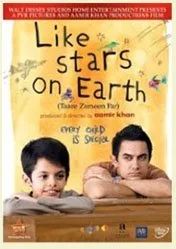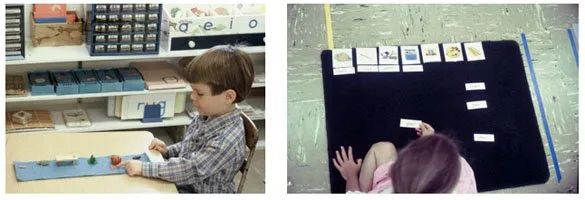Film 8 - Like Stars on Earth
Learning to See the Child Who is Not Yet There
The Dyslexic Child

Dyslexia can be a crippling condition and it is encountered head-on in this captivating film. Like Stars on Earth happens to be my all-time favorite of a film about a teacher. The film captures all the pain of children who struggle as well as the passion of a teacher who truly cares. The role of the teacher encapsulates more fully what a real teacher needs to be and do than any other movie I have seen. You will see him systematically challenge not only the child, but his parents, the other teachers and the principal. Standing up for a child and who he can become is a complex process and this teacher shows us how it’s done.
This film was made in India and distributed in the US by Disney. It is available on Netflix and other venues. Public libraries often have a good selection of films, or you can rent them or even buy your favorites through Amazon.com. A short preview is included at the end of this post.
Like Stars on Earth tells the story of a child in modern day India, eight-year-old Ishaan. Ishaan is literally losing his soul in a harsh, uncaring school system with parents and teachers who do not understand his dilemma. He cannot read. He is dyslexic, but no one recognizes the problem. They see the symptoms, but entirely miss identifying the cause. He becomes withdrawn and deeply depressed after repeated failures in academic settings that neither meet his individual needs nor acknowledge what they are. Although this film depicts a fictional character, Ishaan’s story is all too real.
The film depicts dyslexia and its horrific pain, as well as solutions based on Montessori educational principles. One teacher who truly understands and cares finally arrives on the scene. The love of a substitute art teacher becomes the bridge for Ishaan to find the hidden and repressed creativity that lives so richly within him. His teacher, portrayed by actor, director and producer Aamir Khan, sees the child who is not yet there.
If untreated, dyslexia can cause a child to fail academically because reading is such a core skill in learning everything else. What parents are relieved to understand is that it is a problem with neurological wiring and is no reflection on their child’s intelligence. In fact, most dyslexics are above average in intelligence.
The even better news is that dyslexia can be remedied and even overcome.
In 2003, Sally E. Shaywitz, M.D., co-director of the Yale Center for Dyslexia and Creativity, published Overcoming Dyslexia: A New and Complete Science-Based Program for Reading Problems at Any Level. She describes dyslexia this way:
Dyslexia does not represent an overall deficit in language, but rather, a localized weakness within a specific component of the language system: the phonologic module. The word phonologic is derived from the Greek word phone, meaning sound (as in phonograph or telephone). The phonologic module is the language factory, the functional part of the brain where words are broken down into their elemental sounds….
It has now been shown that the brain can be rewired and that struggling readers can become skilled readers.
Shaywitz goes on, in her ground-breaking book, to explain precisely what children need to overcome dyslexia. It all starts with learning the sounds of the spoken language, followed by learning a strong association of the sounds with the letters. Many children who fail to learn to read have never really learned this association. Once that association becomes strong, the child can start to build and read words. Research shows us that children must become word readers before they tackle sentences and paragraphs in connected text.
There are many steps involved in the process and this movie, Like Stars on Earth, demonstrates some of them. Actor/producer/director, Aamir Khan, utilized Montessori principles in the making of the film and, in fact, the real Tulips School shown in this film is a Montessori school.
The basic sequence that Shaywitz outlines is the sequence that Montessori originally outlined in the early 1900s and that is now taught in many, but not all, Montessori schools. The Language course in our Age of Montessori teacher education program, which will be released in the future as a mini-course, teaches the refined details of how to teach nearly every child to read.

The child on the left is matching pictures and learning new vocabulary. The child on right is learning to trace the letters as she murmurs their sound. She is using her sight, voice, ears and tactile sense for true multi-sensory learning.

The child on the left is saying the beginning sound of each object that begins with /t/.
The child on the right is reading individual word cards that match the pictures.




















